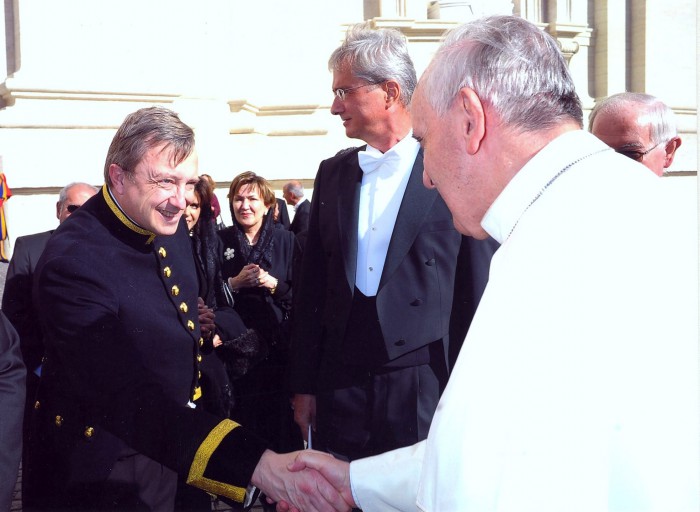17th August 2015
Diplomatic Uniforms at the Holy See


One of the quirks of being posted to the Holy See is that it is one of the few in the world where Ambassador and Deputy Head of Mission regularly have to wear diplomatic uniforms. It comes as a surprise to many that the Foreign Office has a uniform at all – unless they had considered the very outdated stereotype of pinstripes, rolled umbrella and a bowler hat as a uniform!
In a number of countries Ambassadors wear their uniform for presentation of credentials and perhaps one or two other very formal occasions (and some Governors of our Overseas Territories also wear them). But in the Holy See the diplomatic corps is required to wear either uniform or white tie for Papal Masses and other ceremonial occasions. They get a regular airing, and I probably wear mine 12-15 times a year. We are not the only country to wear uniform as there are about a dozen others, and they provide a colourful spectacle at formal ceremonies.
Diplomatic uniforms were first introduced in 1781, and their use spread during the 19th century. Mine is still based on 19th century court dress. It is a dark blue single-breasted tail coat, lined with black silk, stand collar and gauntlet cuffs with black velvet facings and gilt braiding and gilt buttons. I also carry a bicorn hat (as seen in many a Hornblower series), gloves and a sword. The picture attached gives the full impression. The main difference between my uniform and the Ambassador’s is that he has more braid on the collar and cuffs, and ostrich plumes in his hat.
These uniforms are not made from lightweight material. This is fine when a ceremony is in the Basilica in the autumn or winter, but it makes sitting out in St Peter’s Square under the Roman sun rather warm! But overall the uniform is another fascinating part of the posting here: how many people can say that they walked into St Peter’s Basilica with a sword at their side?
